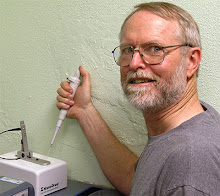 “If you notice your bowel movements, they are unhealthy.”
“If you notice your bowel movements, they are unhealthy.”Scatological jokes are common. The guide on my Swedish language tour of Moscow in 1976, told a joke about Russians. She described Russian toilets that are dry, with a shelf for stools to drop upon and a lower hole in the back into which the stool is swept with water. This was contrasted to Western toilets that partially concealed the stools as they dropped into water. The joke was that Russians had no art, because they could easily observe their creations each morning.
You Are What You Eat and the Proof Is in the Toilet
Refer to Mr. Monastyrsky for a broad discussion of constipation and stool characteristics. This web site has lots of information about stool types, how to get them and how to change them. His recommendations to avoid constipation center on a healthy diet, like my Anti-Inflammation Diet, plus glutamine to help the gut heal.
Another useful perspective on gut flora is provided by a Nature web site on gut flora genomics. This site describes genomic research to show that changing diet changes relative proportions, but not the types of bacteria in gut flora. Each person has a recognizable, individual composition of gut bacteria.
Feces Is Primarily Bacteria
What you eat and your eating/health history determines your gut flora, and feces is made up of gut flora and some undigested food. Healthy bowel movement stools are made up of more than 50% bacteria and the consistency of the stools is determined by the bacterial content. Less bacteria means drier, harder stools. Bacteria hydrate stools and prevent constipation.
Pathogenic Gut Flora
Why does a total bowel irrigation with PEG, polyethylene glycol, make people with chronic diseases feel as good as if they had an antibiotic treatment (barring die off)? I think that the answer is that both disrupt and change the gut flora and in many cases disease symptoms are supported by an unhealthy gut flora/biofilms. In many cases, the antibiotic cannot have a lasting impact, because it is hard to kill bacteria in biofilms. PEG may actually clean out more of the biofilms, because it should also disrupt the polysaccharide matrix of the biofilms.
Disruption of Gut Flora Leads to Disease
Babies fed breastmilk vs. formula display very large difference in inflammation and susceptibility to disease. Formula causes gut inflammation and susceptibility to intestinal and respiratory diesease. Formula also causes a dramatic shift in gut flora from a simple flora dominated by Bifidobacter to a complex adult gut flora.
Gut Controls Immune System
The impact of the two different gut flora on development of the GI tract and on the newborn immune system is dramatic also. Remember that most of the immune system of the body is located in the lining of the gut and immune organs, such as the tonsils, are outgrowths of the GI tract. The thymus, which is responsible for producing T lymphocytes, is twice as large in breastfed babies. Thus, feedback from the gut of formula fed babies inhibits thymus and immune system development.
Change Your Gut Flora and Change Your Health
Experiments in mice, and I think in humans, have shown that changing the bacteria in the gut changes interactions with food. Exchanging gut bacteria between fat and lean individuals, causes fat people to lose weight and lean people to gain weight. I think that this indicates that gut flora participate in the so called metabolic set point, that determines if it is going to be easier to gain or lose weight. These experiments suggest that a powerful approach may be to eliminate the gut flora of individuals with chronic disease and replace it with healthy gut flora. This healthy gut flora, along with a healthy diet may make a powerful contribution to elimination of chronic diseases. Rosacea, which involves both the face and gut, might best be treated by topical antibiotics and anti-inflammatory agents, after the gut contribution has been eliminated by a fecal transplant with healthy gut flora/diet.
Anti-Inflammatory Diet Should Support Healthy Gut Flora
The efficacy of an anti-inflammatory diet (AID) should be displayed in reversal of inflammatory symptoms and unmemorable bowel movements. A gut and gut flora that resist inflammation as a result an AID, should also produce a healthier immune system and contribute to a reduction in chronic inflammation and disease. The gut may also have an impact on gut flora and a diet that does not contribute to inflammation in the body, e.g. lacks fructose and vegetable oils, may also support an anti-inflammatory gut flora.


